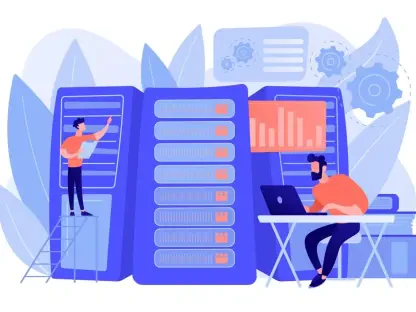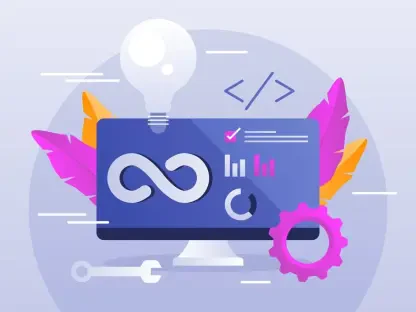In an era where artificial intelligence is rapidly evolving, the contributions of experts like Anand Naidu are invaluable. As our resident development authority, Anand sheds light on the potential and limits of AI-assisted coding, provides a critical analysis of emerging technologies, and offers a glimpse into the future of software development. His insights draw from deep expertise in both frontend and backend programming.
What is your view on the current state of AI-assisted coding tools like GitHub Copilot?
AI-assisted tools have made substantial strides, particularly for straightforward applications. They can effectively aid in writing code for simple tasks and even assist beginners with limited programming experience. Tools like GitHub Copilot exemplify AI’s capability as a complementary resource for programmers.
How do AI tools perform when it comes to simple web applications and basic database projects?
These applications are where AI tools truly shine, providing quick prototyping and automating repetitive tasks with efficiency. For projects with well-defined parameters and clear objectives, AI can significantly accelerate development timelines.
What challenges do AI systems face when dealing with complex software projects?
The intricacy of complex projects often lies in interdependencies across multiple codebases and files. AI systems struggle with these layered nuances, where human intuition and architectural oversight remain critical. Current AI models lack the sophistication needed for holistic project comprehension and management.
Can you elaborate on the “upper limit” you mentioned for AI systems using autoregressive transformers?
Autoregressive transformers, though powerful, have inherent limitations in their design which pose challenges for scaling complexity. They excel with linear, chronological tasks but falter with understanding deeply interrelated systems, setting a natural boundary for current AI capabilities.
How do you foresee AI systems evolving over the next five years in terms of building complex software?
While AI systems will continue improving, I anticipate a gradual rather than revolutionary shift. They’ll likely evolve to be more effective collaborators, enhancing productivity but still necessitating human judgment for intricate tasks and ethical considerations.
What role do you envision for human programmers in AI-assisted coding environments?
Human creativity and decision-making will remain indispensable. Programmers will likely evolve into roles that emphasize problem-solving, innovating new algorithms, and making strategic decisions, leveraging AI for efficiency without surrendering creative control.
Could you provide more insight into Microsoft’s original vision of AI as a “Copilot”?
The “Copilot” concept is about partnership—AI at the helm assisting, not dominating. This vision fosters a symbiotic relationship where AI augments human capability, handling repetitive tasks while freeing programmers to focus on higher-level challenges.
How have computing resources shifted from AI model training to AI inference?
There has been a marked shift towards maximizing efficiency in inference. With AI models being operationalized more widely, the emphasis has transitioned from resource-intensive training to optimizing models for real-time application scenarios and edge computing.
What are agentic AI systems, and why are they becoming a focus for tech giants?
Agentic AI systems, capable of autonomous operation, represent a frontier in AI development. They’re gaining traction because they promise to expand AI applicability across more complex and dynamic environments, providing new opportunities and challenges for the industry.
Can you explain the purpose and significance of the “crescendo” technique in AI safety research?
The crescendo technique explores how AI can be subtly manipulated to divulge information it otherwise wouldn’t. This line of research is crucial for understanding AI vulnerabilities, making systems more secure and robust against potentially harmful exploitation.
How did the crescendo method manage to influence AI-generated research accepted into a scientific conference?
By revealing AI’s capacity to refine its output under guided questioning, the crescendo method showcased how AI could contribute to meaningful academic discourse, pushing the boundaries of what AI-generated content might achieve when skillfully harnessed.
What are some examples of AI hallucination problems you’ve encountered, and how might they be mitigated?
AI hallucination, where systems produce incorrect or nonsensical outputs, remains a pressing issue. It can be minimized through rigorous input validation, context grounding, and continuous refinement of underlying models to improve factual accuracy and reliability.
How do you suggest verifying the output from AI models to ensure its reliability?
Verification should be multi-layered, involving cross-validation with reliable data sources, user testing, and deploying models in controlled environments before full-scale adoption. Consistently monitoring and iterating on feedback is vital to maintain model credibility and accuracy.
In what situations do you think it’s most crucial to rigorously verify AI outputs?
High-stakes scenarios, such as healthcare, finance, and legal contexts, demand scrupulous verification. The implications of errors in these fields are significant, necessitating stringent oversight to prevent misinformation and ensure the highest fidelity of AI-generated data.
Do you have any advice for our readers?
Embrace AI with curiosity and caution. Understand its capabilities and limits, and approach it as a powerful tool rather than a panacea. Continually educate yourself about AI advancements and their implications, staying informed and adaptable in this dynamic landscape.









